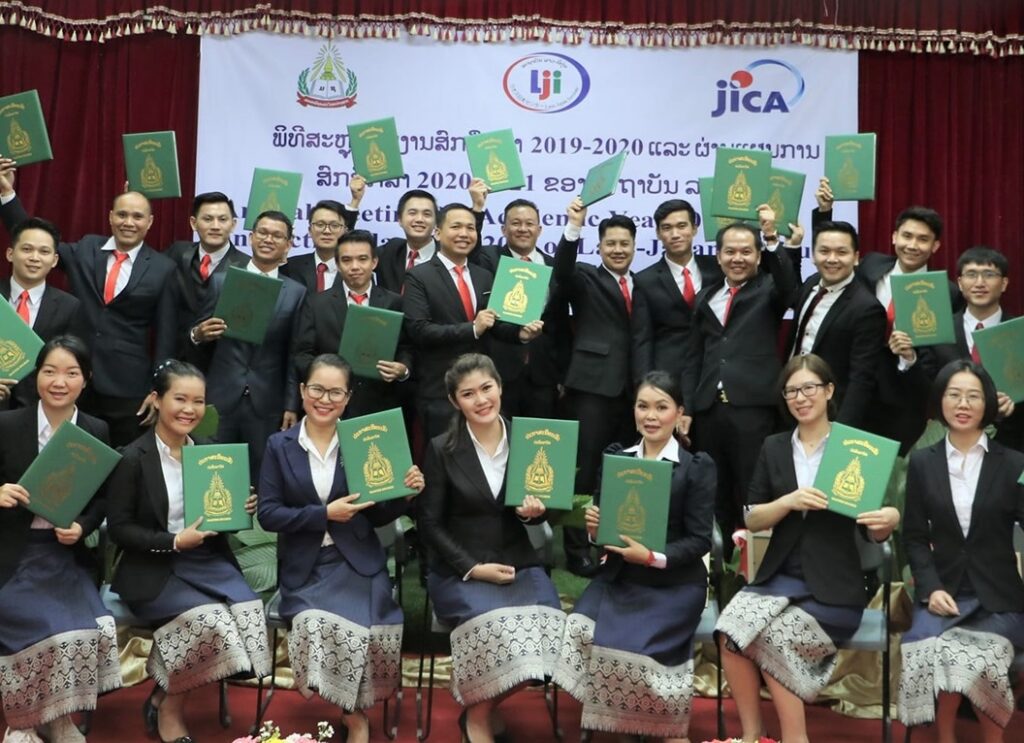Welcome to the official homepage of the Laos-Japan Institute.
Our website is in ongoing development at the moment.
Boosting economics and society with intensive educational programs
WHO WE ARE
LJI was established in 2001 at the National University of Laos with support from JICA. It aims to foster business human resources and promote mutual understanding between Laos and Japan. LJI contributes to socio-economic development through cultural exchange, business management training, and Japanese language education, strengthening bilateral ties.
BUSINESS
LJI is a business human resource development business, Japanese education business, and utilizing the mutual understanding promotion business of Japan and Laos and the know-how and networks cultivated in these three businesses. We are working on a platform business that creates new activities and values.
WHAT WE DO

MBA PROGRAM
LJI’s Master’s in Business Administration, equips students with practical and theoretical management skills to thrive in a global economy, with a focus on ASEAN regional integration and Laos’ development.
446
Graduated
52
Current Students
17
Current Batch
9
International Students
Business Development Program
Hands-on consultancy services to promote participants to apply their knowledge acquired from the lectures into their real business.
Keieijuku Program
Keieijuku is an exclusive management program for CEOs and top executives, offering six key subjects to support self-development and business growth through strategic learning.
Tailor-made Program
The program can be designed for specific target groups in the company with the contents, duration of the program can be custom-made, between 1-14 days.
Regular Program
This is the original program of LJI and we have over 20 years of experience.
Created to respond to the increasing demand for Japanese language education in Laos
Regular Course
Consistency study from beginner to intermediate class to reach JLPT N3 (One semester, 4.5months)
Special Course
Offers Japanese and culture experience summer courses for high school students.
Introductory Course
For beginner, the content consists of reading and writing hiragana and katakana and basic conversation.
Speech Contest
Who are interested in speaking Japanese can apply for competition in Japanese speech contest
LJI regularly organizes various exchange activities to promote mutual understanding and strengthen the relationships between the Lao and Japanese people.

